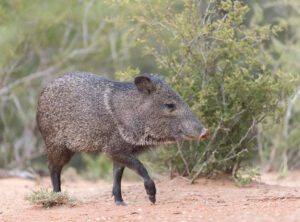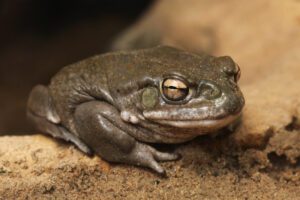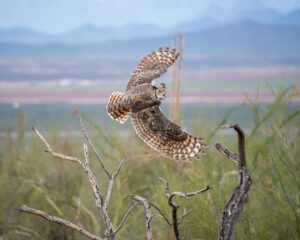It’s a big, beautiful desert wonderland out there! Arizona is home to some of the most stunning hiking trails in the country. Even if you’re just going for a quick jaunt around the neighborhood or hanging out in your yard, the Sonoran desert is full of flora and fauna for you and your dog to enjoy… but do so carefully! Our previous blog posts address dog safety around other pets, but what about wild ones? Here are some tips for dog safety with wildlife as you come across Arizona’s native residents.
Never, ever approach on purpose!

First and foremost, do not approach any wild animals with your dog on purpose. An animal does not need to be a predator to be dangerous. Javelina (also known as collared peccaries) are known to charge when they feel threatened. Deer that have been fed by humans or are in rut can be aggressive. Even a rabbit could potentially be carrying diseases or parasites that can be harmful to your dog.
Remember also that your dog is a descendant of a wolf and has some natural hunting instincts. The wild animal could be no threat to your dog, but your dog could be a threat to them. Finally, even if this wildlife interaction goes smoothly, you are teaching your dog that it is safe to approach wild animals. Next time it could be a bobcat or coyote, so watch out!
Leashed is Safest

Allowing your dog off-leash in public a hotly debated topic (not to mention, may be a misdemeanor in the city of Phoenix, depending on the situation). A leash is not a punishment for your dog, but a tool to keep your dog safe from hazards. The general consensus is that if you want to have your dog be off-leash, you will need to put in a significant amount of training beforehand. Most puppies are simply not at this level yet. Be sure that if you’re out and about with your puppy, keep them safely leashed at your side.
Practice Your Recall
Regardless of whether you plan to have your dog on a leash or not, practice your recall with them as often as possible! Dogs are notoriously bad at generalizing, so the more situations you can reinforce your puppy’s recall in, the better. Your puppy should respond quickly to the recall and return to your side. When it comes to wildlife safety, this recall even the short six feet of your leash could mean the difference of whether your puppy sustains a scorpion sting – or a face full of skunk spray, if you’re in Northern Arizona!
Avoid Dawn and Dusk
Because the desert is a biome of extreme temperatures both day and night, much of the wildlife has evolved to be crepuscular, meaning most active at dawn and dusk. Try to avoid walking your dog around these times if possible. Unfortunately, due to these same extreme conditions during the summer months, these may be the most convenient times to take your dog out! In these cases, try to stick to urban areas. Dangerous critters are much more likely to be seen in their natural environments than in the concrete jungle. If you simply must walk in an undeveloped desert area, try to make some noise every so often. Most animals would rather avoid us than pick a fight.
Consider Rattlesnake Avoidance Training

Rattlesnakes are among the potentially most serious risks to your dog in the desert. Worse yet, because they slither on the ground, your dog may instinctively assume that they are prey and try to catch them! To reduce this risk, consider enrolling your dog in a rattlesnake avoidance training class. A snake avoidance instructor works with dogs in this class to create a negative association with the scent and sound of a rattlesnake. Best of all, it only takes fifteen minutes! Learn more about rattlesnake avoidance training and its benefits here.
Supervision is key – even in your own back yard!

When you’re out in nature with your dog, try to be present and aware of what your dog is doing. Do not allow them to stick their faces in holes in the ground, which could possibly house snakes or tarantulas. Also be mindful of anything that your puppy picks up in its mouth. The Sonoran Desert Toad (also called the Colorado River Toad) can be found in Arizona during monsoon season and is highly toxic to dogs.
At home in your secured yard, you can be a little more relaxed, but we do not advise allowing your dog out unattended. Hawks or owls are a threat to puppies or small dogs and can easily take them away. Snakes, coyotes, or other animals can also wander their way from their desert homes into your yard, especially if you live near to a wash. Keeping an eye on your puppy when they are outside is a good practice.

Happy adventuring!



